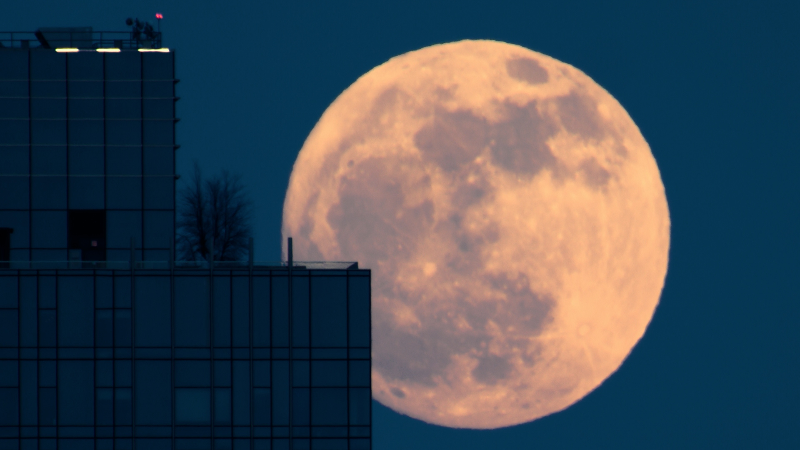An asteroid crashing into the moon? No, video is fabricated | Fact check

The claim: Video shows asteroid striking moon
An Aug. 19 Facebook post (direct link, archive link) appears to show footage of an object streaking across the sky and colliding with the moon, sending out a visible shockwave.
“Moon hit by asteroid CAUGHT ON CAMERA,” reads the post’s caption.
It was shared more than 1,000 times in a week. The video was also posted on TikTok.
More from the Fact-Check Team: How we pick and research claims | Email newsletter | Facebook page
Our rating: Altered
Two experts who examined the video determined it is likely to have been edited. There are no credible reports from government agencies or news outlets of an asteroid hitting the moon on the day the video was shared.
Video analysis reveals footage is digitally edited
An analysis of the video by Northwestern University’s V.S. Subrahmanian, a computer science professor, and Marco Postiglione, a postdoctoral research fellow, found multiple clues that it’s likely to have been digitally edited. These include the following:
- The asteroid appears to explode before it hits the moon.
- The shockwave unnaturally passes in front of clouds in the sky.
- The video zooms out after the impact, suggesting it was edited after being recorded.
- The explosion sound is quieter than the wailing alarm and barking dog, suggesting the layers of audio were edited together.
No credible news reports support the post’s claim of an asteroid hitting the moon on Aug. 19, when the post was made, nor is anything mentioned about such an incident on NASA’s website or social media accounts, including its Asteroid Watch account.
While asteroid impacts are rare, the moon is bombarded by smaller meteoroids every day, and it isn’t unheard of for such impacts to be visible from Earth without a telescope. On March 17, 2013, an object less than 2 feet wide crashed into the moon while traveling about 56,000 mph, causing an explosion equivalent to 5 tons of TNT, according to a NASA news release.
“Anyone looking at the moon at the moment of impact could have seen the explosion – no telescope required,” the news release says. “For about one second, the impact site was glowing like a fourth-magnitude star.”
NASA also has videos on its website of similar flashes created by lunar impacts.
Fact check: An airplane crashing in California? No, video is altered
If a large asteroid hit the moon, it would make a sizeable crater and eject material from the surface, but that would be the extent of the damage, according to The Planetary Society. There are no asteroids in the solar system large enough to break the moon apart or knock it off its orbit.
Most known asteroids orbit the sun in the asteroid belt between Mars and Jupiter, according to NASA. The largest, Vesta, is about 329 miles in diameter. NASA has estimated that there are between 1.1 million and 1.9 million asteroids larger than 1 kilometer – about 0.6 miles – across, and millions of smaller ones.
NASA has identified, as of July 31, about 35,000 near-Earth asteroids, including more than 800 bigger than 1 kilometer across.
Unlike Earth, the moon has no atmosphere, which means it has no wind or weather. As a result, its surface is covered with well-preserved craters from all manner of impacts.
The largest craters on the moon surpass any found on Earth, according to the American Museum of Natural History. For example, Mare Imbrium spans about 750 miles across, at least four times the size of Earth’s largest known impact crater.
Paste BN reached out to the social media user who shared the post for comment but did not immediately receive a response.
Our fact-check sources:
- V.S. Subrahmanian, Aug. 26, Email exchange with Paste BN
- NASA, accessed Aug. 26, All NASA News
- NASA, accessed Aug. 26, Asteroid Facts
- NASA, May 16, 2013, Bright Explosion on the Moon
- NASA, accessed Aug. 26, Lunar Impact Videos
- The Planetary Society, Aug. 24, 2023, What would happen if an asteroid hit the Moon?
- American Museum of Natural History, accessed Aug. 26, On The Moon
Thank you for supporting our journalism. You can subscribe to our print edition, ad-free app or e-newspaper here.
Paste BN is a verified signatory of the International Fact-Checking Network, which requires a demonstrated commitment to nonpartisanship, fairness and transparency. Our fact-check work is supported in part by a grant from Meta.